List of Authors
>>About this blog
Recent blog post
|
[Sam]
February 8, 2016 14:00
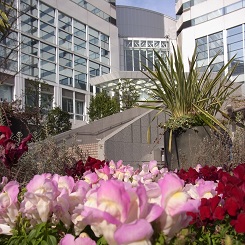 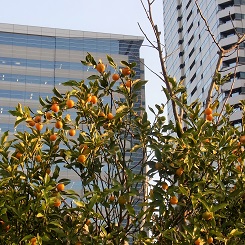
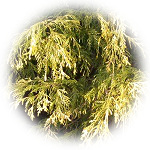 An annual mini-garden guided tour that takes a walk around the park with the guidance of a green adviser at the Pocket Plaza "Flowers, Water and Trees" in Harumi Triton Square. An annual mini-garden guided tour that takes a walk around the park with the guidance of a green adviser at the Pocket Plaza "Flowers, Water and Trees" in Harumi Triton Square.
This month was held on February 4th. (12:30~ 14:30~)
The theme this time is "Plants in the Garden of Ritsuharu".
The squirrel (Gomasaceae), which I mentioned last time, is planted by people, such as the flower terrace, slope garden, South Triton Park, but the sunny, South Triton Park, is the plumpest and energy. It is blooming.
The filiferralia (Hypressaceae), which is characterized by a thread-like hanging golden leaves, seems to have a more vivid yellow taste in South Park. (upper left)
A white flower with a new face of the orange family blackware on the flower terrace.
It is a cute star-shaped flower.
When you rub the leaves, it smells unique to citrus fruits.
In the slope garden along the Asashio Canal, Kinkan shines orange in the sunset.
On the green terrace, red plums and heart wax plums are eye-catching.
You can rest your mind with the calm and calm fragrance of Soshinrobai.
If you pay attention to your feet, just before pheasant's eye, a typical flower that tells spring, sprouts.
I'm looking forward to the future.
On the terrace area, winter buds that eventually become leaves and flowers look into the branches of trees that had dropped the leaves in winter.
Near the winter buds, there are traces of leaves falling (leaf scars), and the shape and arrangement of each are seen in the eyes, ears and mouth, and the whole situation looks like a human or animal face, and humorous Invite smiles.
They also gave a lecture on how to grow differently according to the type and variety of succulent plant and procedures at cutting.
In addition, it was a plant walk with a wide range of ways to enjoy watching flowers and trees in the winter.
From the left, Kuroware, Kobai, Soshinrobai, pheasant's eye
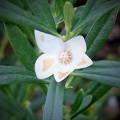  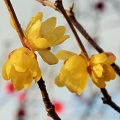 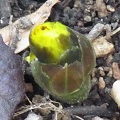
From the left, horse chestnut, maple, Kashiwaba hydrangea, hydrangea
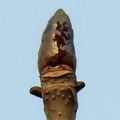 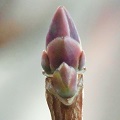 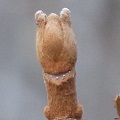 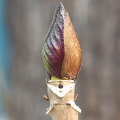
[Dimini ☆ Cricket]
February 8, 2016 12:00
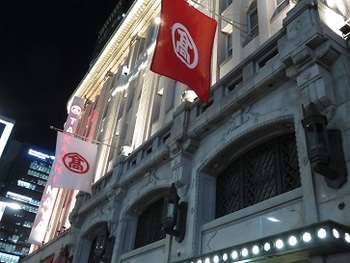
At Nihonbashi Takashimaya, a dream collaboration between "Doraemon" and "Hello Kitty" is now being realized. between "Doraemon" and "Hello Kitty" is now being realized.

The period is from Friday, February 5 to 16 (Tue).
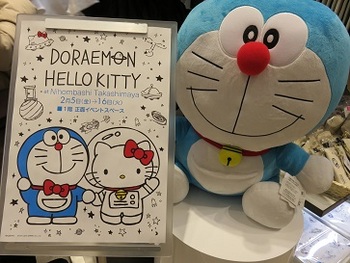
This is the front event space on the first floor of the Nihonbashi store.
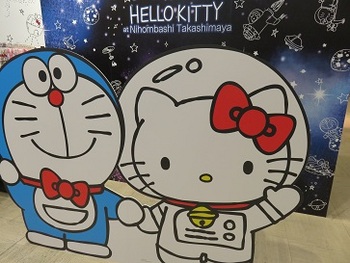
Many Doraemon x Hello Kitty goods are on sale.
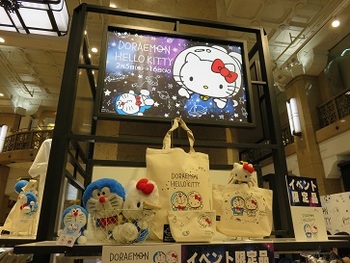
"Amour du Chocolat! Takashimaya x Glass Mask" is also being held.
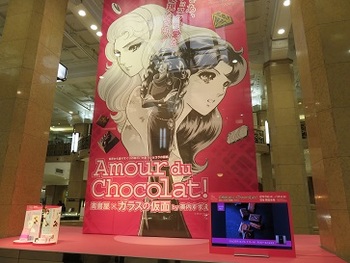
Click here for the website of Nihonbashi Takashimaya ⇒
http://www.takashimaya.co.jp/
     
[CAM]
February 8, 2016 12:00
Sugimori Shrine
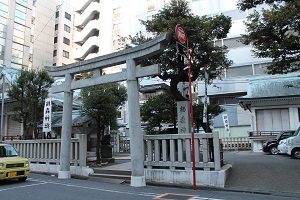 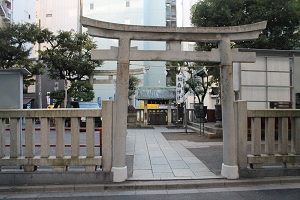 
Location 1-10-2, Nihonbashihoridomecho, Chuo-ku
According to the shrine, Sugimori Shrine was founded by Hidesato Fujiwara, who prayed for victory in order to settle the rebellion of Heishomon during the Heian period.
In the middle of Muromachi, Michio Ota of Edo Castle recommended the god of the Gosha of Fushimiinari, Yamashiro-kuni (Kyoto Prefecture) to pray for rain. It was counted as one of the Mimori (Kasumori, Yanagimori, Sugimori), and was called Sugimori Inari, and was called Sugimori Inari, and the religion of the common people of Edo.
Often, temples and shrines were burned down by fires in Edo Castle, etc., and for the cost of rebuilding, fortune-telling was performed at leading shrines and shrines, and our wealth was also popular with people.
Even after the Meiji Restoration, it was actively worshiped as a ancient shrine in Tokyo, but unfortunately it was burned down in the Great Kanto Earthquake, and the current shrine was built in 1919 with a monument of Tomizuka standing beside the torii gate in 1931. It was registered in 1953 (rebuilt in shrine hall).
March, 1996
Chuo-ku Board of Education
Monument of Tomizuka (Sugimori Shrine)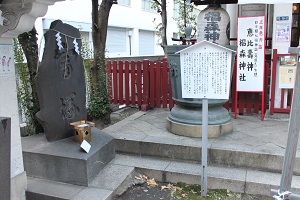
Koami Shrine
 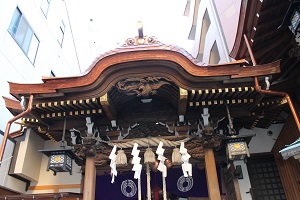
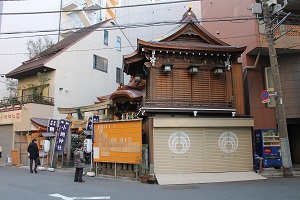
Location 16-23, Nihonbashikoamicho, Chuo-ku
According to the company's biography, the company originated from Inari Shrine, which was enshrined here in the middle of the Muromachi period, with Koamiyama Manpukuji as a separate temple. In accordance with the Shinto and Buddha separation order at the beginning of Meiji period, Inari Shrine was called Koami Shrine, and the current location, which was a part of the riverbank of the Higashiboriru River, was designated as the company site. At present, he is widely worshiped as some deities of Koamicho and Ningyocho, and also in downtown Tokyo.
On the grounds there are shrine hall and Kagura Hall built in 1929 (1929). shrine hall has a traditional form of shrine architecture, and the worship is decorated with sculptures such as rising dragons, descending dragons, lions, bakus, and phoenixes using excellent techniques. In addition, the Kagura-den, which stands by the road, has a special flat form called a pentagon. The shrine hall and Kagura Hall are one of the few wooden shrines that exist in Chuo-ku, along with materials related to the construction of the munefuda and others.
April, 1991
Chuo-ku Board of Education
Koami Fukurokuju
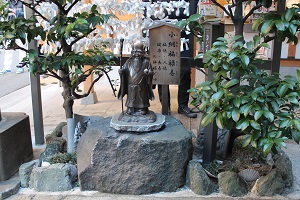
[Dimini ☆ Cricket]
February 7, 2016 09:00
From the Yaesu Exit of JR Tokyo Station, enter the Yaesu Underground Shopping Center and go to the right (south side), there is Sanuki Udon's "Sanuki Seimen Mugimaru Yaesu Underground Shopping Center South Exit".
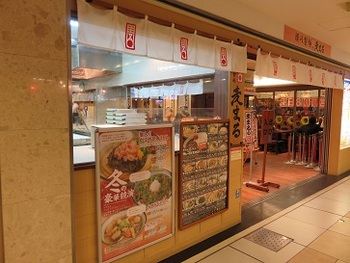
On the map of Yaesu Underground Shopping Center below, it's the point with the red arrow.
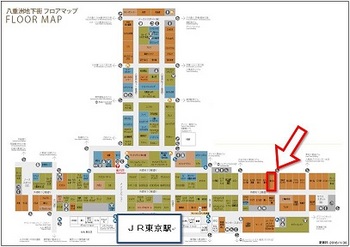
Sanuki Udon is a so-called "self-style" shop that is familiar to you.
As a person from Udon prefecture, this "self" can be used.
You can also make toppings such as tempura and onsen tamago, and I am grateful that you can eat freshly boiled udon quickly. Price is also reasonable
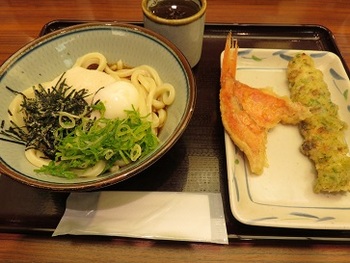
I ordered "Torotama Udon"
"Chikuwaten" and "alfonsinoten" together

Weekdays start at 8:00 a.m.
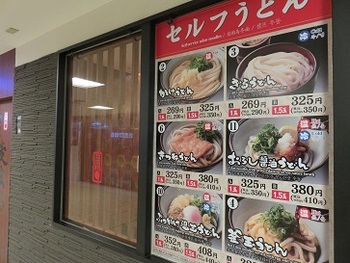
Click here for the website of the Yaesu Underground Shopping Center Sanuki Seimen Mugimaru. ⇒
http://www.yaechika.com/shop_detail.php?shopid=sp276
     
[Silver]
February 6, 2016 09:00
You can take a walk on Tsukishima and experience the history of Tsukishima from the end of the Edo period to the Meiji era.
Tsukishima was reclaimed in 1887.
I would like to introduce two information boards that will tell you about such things.
The first is an explanation version of the "Tsukudajima Battery Ruins" installed around 1-14 Tsukishima. In that explanation,
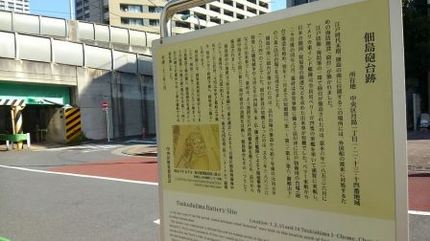
At the end of the Edo period, this place, located south of Tsukuda Island, was built with a sea defense facility called "turret" to cope with the arrival of foreign ships.
The battery was built as part of the Edo defense and maritime defense measures, in June 1853, U.S. East India Fleet Commander Perry arrived in Uraga with four warships, opening Japan and opening a trading port. It was triggered by an event that asked for the opening of a port.
Two months after Perry's arrival, in August of the same year, the Shogunate began building a daiba (turret) for defense of Edo off Shinagawa in preparation for an emergency, and in the short period until November of the following year, "First to Third, Fifth, Sixth, Goten Yamashita "(Shinagawa Daiba) have been completed.
The battery was built south of Tsukuda Island in 1864 (1864), about 10 years after the construction of Shinagawa Daiba.
The triggers for the construction of the battery were events such as the Satsuhide that broke out in 1863 (1863) and the Shimonoseki bombardment by the Shikoku (UK, United States, France, and Orchid) Union Fleet in 1864. .
The Shogunate planned to install a new coastal battery between Shinagawa and Ecchu Island in order to establish a stronger Edo Bay defense posture, and the Tsukuda Island Battery was also built as one of them.
According to "Tokyo Tsushi" in the "Tokyo City History Report", the size of the Tsukuda Island Battery is "Minami Marine Niari on the southern tip of Tsukuda Island, Kyobashi-ku". Approximately 70 meters from east to west, approximately 70 meters from north to south, approximately 72 meters from east to west, approximately 1,377 tsubo. The first year of the first year of the first year of the era, the construction of the Koshi shogunate, the repair of the Meiji era, the Ministry of Army Ni genus ".
In the Meiji era, it became a battery under the jurisdiction of the Ministry of Army, but during the construction of Tsukishima, which began in 1887 (1887), the Tsukishima No. 1 landfill (currently Tsukishima 1-4 chome) was based on the Tsukudajima Battery. Landfill was advanced, and it disappeared during the construction process.
March 2011 (date of installation of information boards)
Also, if you walk from Nishinakadori Shopping Street toward Kachidoki, you will find Nishinakabashi.
The article about the replacement of this bridge is also interesting, so I would like to introduce it.
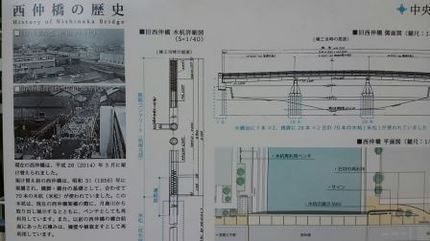
The current Nishinakabashi was replaced in March 2014 (2014).
Before the rebuilding, Nishinakabashi was bridged in 1956 (1956), and a total of 70 wooden stakes (Yonematsu) were used as the basis for piers and abutments.
This wooden stake is taken out of the Tsukishima River at the current Nishinakabashi Bridge and exhibited, and is also reused as a bench. In addition, the masonry in front of the abutment of Nishinakabashi used to be reused as retaining walls and planting.
That's an explanation.
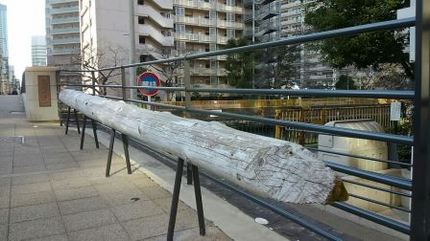
The foundations and bridges of buildings from Meiji period to Showa were used a lot of American and Canadian pine trees.
While thinking about such things, I sat on a reusable bench and enjoyed a walk   on Tsukishima. on Tsukishima.
1.
February 5, 2016 16:00
Today is spring, and the cold is going to be in production. When it gets cold, it's sake that makes it delicious.
Last month, I had a very fashionable label called "Black Belt" at Wakura Onsen. Looking at it, there was Fukumitsuya, and I remembered that there was also a shop in Ginza. "SAKE SHOP Fukumitsuya" in Ginza closed in 2011 and then opened on the 7th floor of Ginza Matsuya. It is said that this year will be the 3rd anniversary. Fukumitsuya was founded in 1625 and is the oldest sake brewery in Kanazawa, a place of sake.
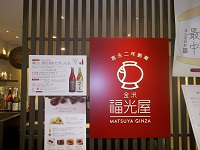
The shops on the 7th floor include "Kaga Tobi", "Black Belt", "Arabashiri", etc., as well as "Today's Shibori".
There are "new freshly squeezed seeds" such as "January 20" and "January 23". It is bottled and lined up in the store the next day. "February 3rd Tsume" is from tomorrow.
Not only sake, but also fashionable packages such as "SAKE Salt Chocolate", "SAKE Maron Choco" and "Dyodo Tosei Choco" are lined up for Valentine gifts. I received "sake brewery's spilled plum chocolate cranch" (600 yen). "Kobore plum" is said to be a slag of mirin.
I feel like I read it in the "Mizukushi Cooking Book" ... This spilled plum is baked crisply and wrapped in bitter chocolate with nuts and cranberries. I think it's good for those who don't like sweet things. When I put it on the table, I noticed, "I should have been there a while ago ..." and it was gone.
There is a bar corner, a "drinking comparison set of sake" 1200 yen, and a "pumpkin and sake cake soup powder". I received 750 yen "Sake chocolate mirin banana parfait".
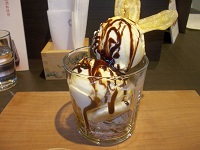
Ice cream has a slightly sweet taste of sake cake, fresh bananas and toppings are banana chips, and various textures can be enjoyed. A young woman enjoying a "drinking comparison set" at the end of the counter. It looked very cool. It is near the corner where stylish kitchen goods and living products are lined up.
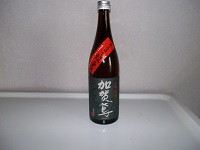
It's a little bit of a secret!
If you visit the shop, the naming of "Black belt" is Kenichi Yoshida, a literary critic who is also famous as a gourmet.
Fukumitsuya Matsuya Ginza Store
10:00~20:00 TEL 03-6228-6113
|
Links
|


 An annual mini-garden guided tour that takes a walk around the park with the guidance of a green adviser at the Pocket Plaza "Flowers, Water and Trees" in Harumi Triton Square.
An annual mini-garden guided tour that takes a walk around the park with the guidance of a green adviser at the Pocket Plaza "Flowers, Water and Trees" in Harumi Triton Square.






















